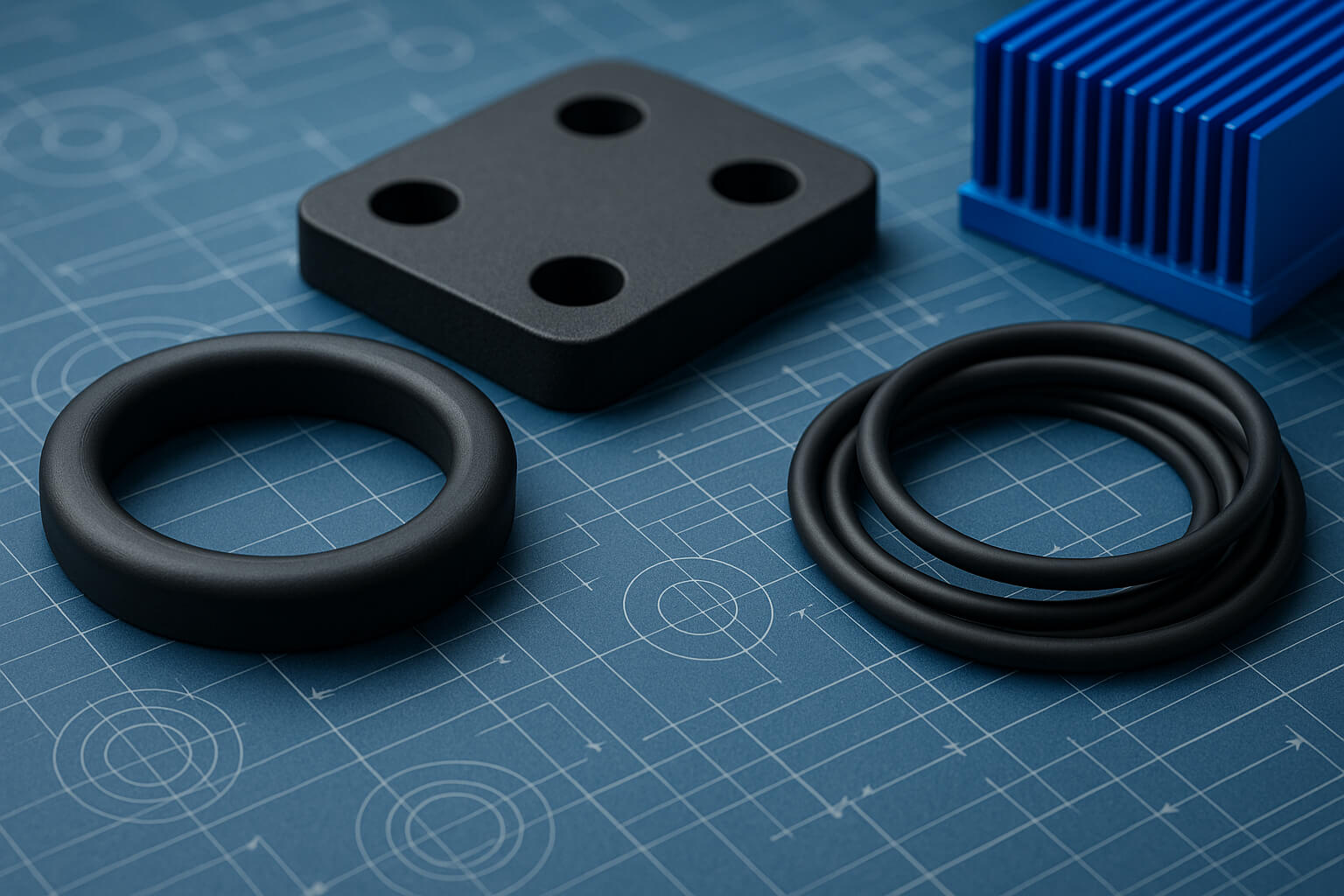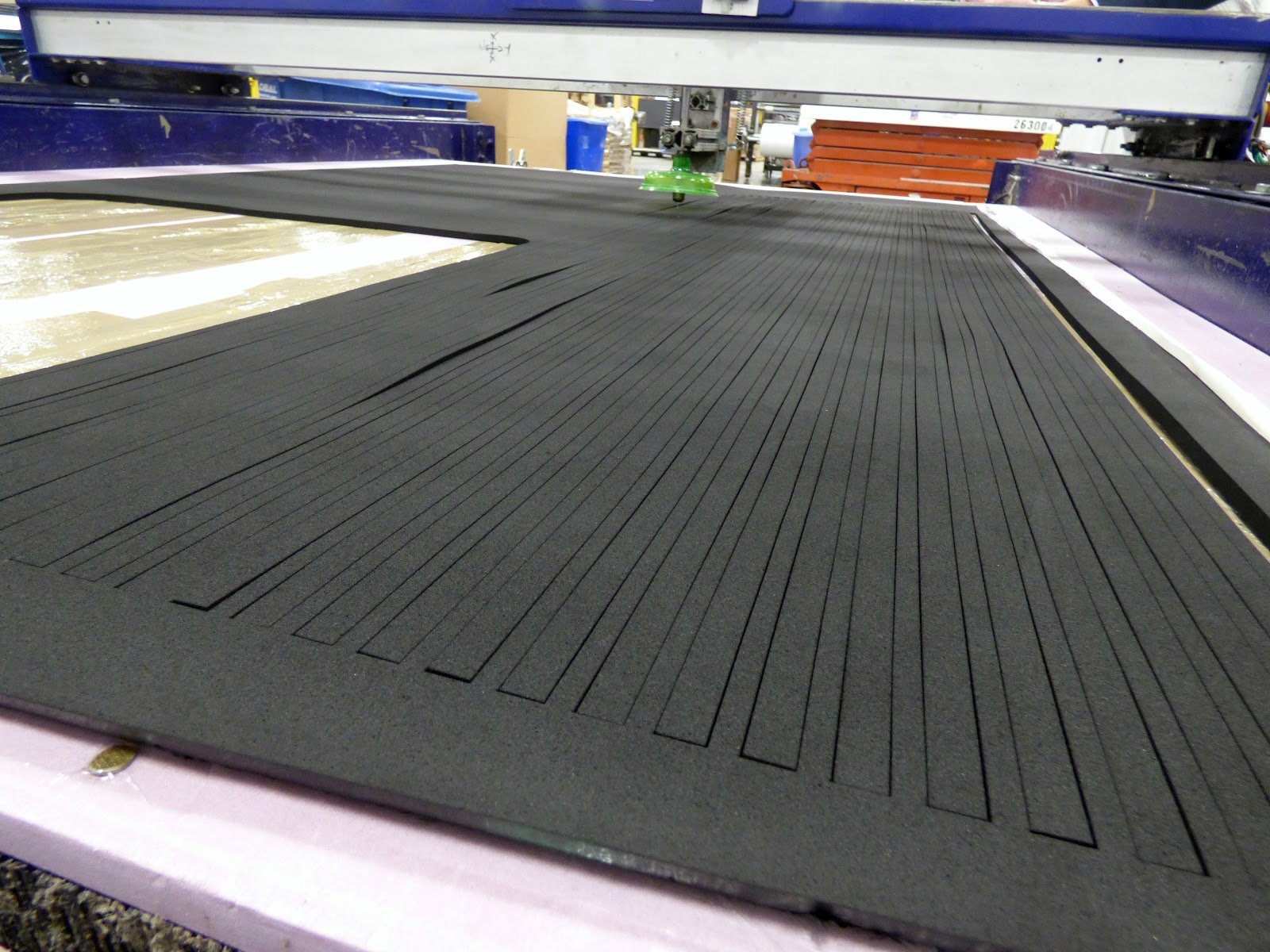
Silicone elastomers are essential materials in modern engineering, providing flexibility, durability and high-performance capabilities across various industries. Their compressibility, combined...

Managing shock absorption is critical for protecting equipment, enhancing user safety, and prolonging product life in industries like automotive, electronics, medical devices, and HVAC systems. Selecting materials with the right shock absorption properties can mean the difference between product longevity and premature wear or failure. Here’s why shock absorption matters, the main strategies for achieving it, and how Sur-Seal can support your projects with customized solutions.
Shock absorption plays a pivotal role in reducing the impact of sudden forces, such as drops, vibrations, or mechanical stress. By dispersing these forces, materials like specialized foams and dampeners help prevent damage to sensitive components, reduce noise, and even improve user comfort in products that people frequently interact with. For instance, shock-absorbing materials are essential in automotive parts, electronics, and medical devices, where reliability and resilience are crucial.
Closed-cell foam is a go-to material for high-impact applications due to its density and structure, which resist compression. This foam protects heavy-duty items because its cells remain intact under pressure, effectively absorbing shock. Applications include automotive parts and protective packaging, where components need resilience against physical stress and temperature fluctuations. For a deeper dive into how closed-cell foam works in shock absorption, Sur-Seal’s closed-cell foam guide provides further insights
Unlike closed-cell foam, open-cell foam offers greater flexibility and sound absorption, making it suitable for lighter shock absorption. This material is often used in industries like HVAC and electronics, where minor impacts and vibrations need to be absorbed while maintaining flexibility. Learn more about the differences between open-cell and closed-cell foam in Sur-Seal’s foam material resources.
Dampening solutions are beneficial in reducing vibrational impacts that can wear down components over time. Sur-Seal’s custom dampening materials, which include polyurethane, rubber, and non-woven options, are tailored to specific environments, ensuring that every project receives materials that will optimize shock absorption for that unique application.
Choosing the right cushioning solution for shock absorption involves more than simply selecting a material — it requires an in-depth understanding of the operational environment, mechanical requirements, and compatibility with other materials. Here are some crucial questions engineers should evaluate to ensure the chosen cushioning solution performs optimally within the specific application:
What frequency is causing the vibration or noise?
Understanding the frequency and type of vibration (low, medium, or high) is essential to selecting a material that can effectively absorb and dampen those vibrations. Different materials resonate or absorb at various frequencies, and selecting one that matches the frequency of the issue is critical to effectively reducing noise and vibration.
What’s the application? Are there any specific factors that need to be incorporated?
The application context — automotive, medical, HVAC, or electronics — impacts the type of material required. Engineers should assess specific regulatory requirements, such as uL specifications, and consider any environmental factors, like extreme temperatures, moisture, chemicals, or dust exposure. For instance, closed-cell foam is ideal for high-impact and moisture-prone environments, while open-cell foam might be better for sound absorption in stable indoor settings.
What materials will the solution bond with?
The material selected must be compatible with existing components in the design, as some materials adhere better to certain surfaces than others. Engineers should consider the bonding needs between the cushioning material and surrounding components, whether metal, plastic, or composite, to ensure reliable adhesion and durability over time.
What’s the primary issue we’re trying to solve?
Defining the main purpose of the cushioning solution — whether it’s shock absorption, vibration dampening, noise reduction, or a combination of these — guides engineers to a tailored solution. Clarifying the problem also helps Sur-Seal’s experts select the right materials and optimize configurations that effectively address specific concerns.
These questions help streamline the decision-making process, ensuring that each cushioning solution meets industry standards and performs effectively in real-world applications. Sur-Seal’s Lunch-and-Learn sessions can be an excellent resource for delving deeper into each of these considerations, offering expert advice and material insights for engineers looking to refine their product designs with advanced cushioning solutions.
Whether you need shock-absorbing materials for a sensitive medical device, rugged automotive component, or durable electronic casing, Sur-Seal offers an array of capabilities, from material selection to prototyping. Additionally, their team provides in-depth expertise through their c program, where you can explore their services in material science, cushioning solutions, and application-specific dampening.
Selecting the suitable material for shock absorption requires a nuanced understanding of both the material properties and the specific application. Through Sur-Seal’s comprehensive offerings, which range from custom sealing to nonwoven materials and foam solutions, you can find the ideal balance of durability, flexibility, and impact resistance for any project.
Incorporate shock-absorbing materials from the start to enhance your products’ resilience and performance. Connect with Sur-Seal’s team for a customized approach to your shock absorption needs, and take advantage of their in-depth Lunch-and-Learn sessions to gain more insights into optimizing your products with the best materials